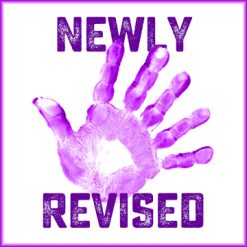|
VOICE OVER MARKETING How To Keep Your Voice Over Sales  By Anne Ganguzza By Anne GanguzzaLet's face it - we're badass business owners! We
build, market, execute, maintain, deliver and account for our product
(ourselves)...and it's a lot. It's a machine that needs constant fuel,
in the form of a reliable income stream. But
voice over is hardly reliable, as clients come and go with each new
job, and we must find ways to keep that income stream flowing. Using
a sales pipeline system can be a great way to keep that stream going by
tracking and managing engagement with prospects, leads, customers, and
repeat clients. As we build successful
voice over businesses, a constantly-full sales pipeline is key. Here's
an overview of how a sales pipeline can help your business thrive WHAT'S A SALES PIPELINE? You're
probably familiar with the concept of a sales funnel, where leads move
along a sales cycle, ever closer to becoming a customer. Well, a sales pipeline enhances that process by adding time
as a measured component and showing how leads move from one stage to
the next - sometimes remaining in an "inactive" state before
progression. A sales pipeline displays
this progression all the way from lead generation to purchase, and can
help visualize your sales process with snapshots of exactly what happens
through the conversion and retention journeys. A sale pipeline helps to illustrate the process by creating a realistic representation of a client life cycle. START WITH CRM The
first step in creating an effective sales pipeline is the management of
prospective client data. Whether you're using an online form to collect
data, or are accessing a vetted email list, you'll need a way to
collect, organize, and interact with clients at each stage in your
cycle. You need a CRM (Customer Relationship Management) system, which becomes the hub of your marketing and grows as you build relationships. Of
course, there are plenty of great CRM options out there, and you'll
need to spend a bit of time deciding which works best for you.
Definitely don't skip this step, and do take your time considering your
business and its specific needs. ATTRACT AN AUDIENCE Once you've got a place to track and manage clients, you can start actively seeking new ones - a process known as prospecting. Every
business owner will use a slightly different methodology to find
potential customers, and it's up to you to determine effective ways to
get yourself noticed. From strengthening
your online presence through SEO, promoting your social media profiles,
writing a blog, running ads, or accessing email marketing lists and
building campaigns, your options are limited only by your creativity and
marketing budget. Take the time to find out where your potential clients are, and meet them there. BUILD YOUR REPUTATION Work on building a reputation that will attract those seeking your services. The idea is to get people interested in what you've got to offer, so authenticity becomes a key element of this process. Take
time to determine who you are and exactly what you provide. Get
comfortable with your online presence and learn to use it strategically. INTERACT WITH YOUR AUDIENCE Generate awareness and trust by interacting with your audience in a real, believable way. Directly
target people who can hire you. Putting money and effort into marketing
can be an important step, but it's just as important to make sure
you're marketing to the right people. Sure,
we all love to market to each other, share posts and links, and raise
our inter-industry profiles, but it takes more than that to position
ourselves so that clients will find our voices. This means making sure that any leads that enter your CRM are qualified. QUALIFY YOUR LEADS To determine if someone is a qualified lead, ask the following questions: 1. Can this client afford my services? Honestly
consider if this client has the budget to hire a voice actor. Many
times we forget this all-important question and instead spend hours
building relationships with people who are unlikely to become real
customers. Giving away your services at
low rates does nothing to keep your sales pipeline flowing with a steady
income stream, and can end up causing that stream to become a constant,
slow trickle instead. Before adding someone to your pipeline, ask if
they can afford your rates. 2. Am I connecting with the right person? When marketing directly, it's important to reach out to someone with the power to hire you or recommend you to someone who can. For
example, if you're marketing yourself to a video production company,
and you're building a relationship with the video editor, there's a
possibility they won't be making the hiring decisions. Think
in terms of job titles and company size, and take time to find the
right person to add to your pipeline, rather than adding multiple people
from the same organization. Who does the hiring of voice actors? That's
the contact you want. 3. Is this person in the business of hiring voice actors? Throwing spaghetti at the wall and hoping it sticks isn't really the best way to form long-lasting connections. For
example, it may seem ideal to reach out to universities with your
eLearning demo, but it is unlikely that their marketing department
directly hires voice actors for their projects. Likewise,
forming strong relationships with people in the HR or Marketing
departments within many industries can be a similar uphill battle. Odds
are, if a company or department has never hired a voice actor before,
there's going to be a lot of extra work on your part to snag them as a
client. Don't waste time trying to convert
someone into a potential client; use your time and resources to guide
true prospects into your pipeline. BUILD REAL RELATIONSHIPS If you've answered the questions above, then it's time to connect with your prospective clients! There's
a distinct difference between the basic concept of networking and the
process of actively building client relationships. It takes a lot of
time and effort to establish yourself as a reputable creative
entrepreneur while drawing leads toward your services, and you shouldn't
expect it to happen overnight. You'll
send emails, actively engage on social media, interact with prospective
clients' content, and compliment their work in ways that elevate them. It
may seem obvious, but how you behave in online spaces can affect how
potential clients see you, so make sure that what you're putting out
there aligns with your professional goals. The
result should be that once you've connected, your relationship grows in
an organic way that has them thinking of you at just the right moment -
when they need a voice actor. KEEP THE CYCLE ACTIVE Once
all that lead generation and relationship-building pays off, and your
prospective client becomes an actual client, it's tempting to consider
the whole cycle closed. But if you're
leaning toward stamping it "done" and moving on to the next hustle,
here's the deal: just because you were hired once doesn't mean someone
will hire you again, and nothing can really keep any client from
disappearing into the abyss. It's all about staying on top of things. A
sales pipeline focuses your attention on remaining in touch with people
after they've hired you, because previous clients already know how
awesome you are! Send "touching base"
emails, follow up on the project, and continue to engage with their
online content - whatever it takes to keep your voice in mind for future
projects. Landing a client is certainly
not the final step when it comes to your sales pipeline - far from it.
Instead, each new hiring begins another cycle of connection, engagement,
and relationship building that significantly improves your ability to
maintain that all-important steady income stream. YOU SEE EACH STAGE A
sales pipeline is a graphical or visual representation of the amount of
revenue at each stage of a client's journey through your sales funnel,
and can help you maintain connections with your clients. While
creating your sales pipeline, make sure it accurately conveys the
important details your business needs, and choose an excellent CRM. Ask
questions about your prospective clients before targeting them, and
work hard to build good relationships using every tool at your disposal.
Create your own sales pipeline and become more efficient at converting leads into clients! ---------------------- ABOUT ANNE Anne
Ganguzza is a full-time voice talent and award-winning director and
producer who works with students to develop their voice over and
business skills - including VO demo training and production. She
specializes in Conversational Commercial and Narration styles, including
Corporate, E-Learning, Technology, Healthcare - Medical, Telephony, and
On-Hold. Located in Orange County, CA, Anne offers private coaching and
mentoring services to students in person and via Skype, ipDTL or Zoom. Email: anne@anneganguzza.com Web: www.AnneGanguzza.com |
Tell Us What YOU Think!
Please Note: Since we check for spam, there will be a slight delay in the actual posting of your comment.
Comments (1)
Naomi
2/11/2022 at 1:54 AM
Thanks for this great article. I do a lot of this but am certainly missing, or have let slip, some of the important details you mention. Itís easy to get swept up in the creative parts of marketing and neglect the nuts & bolts that make it work.






.png)



click for new article alerts